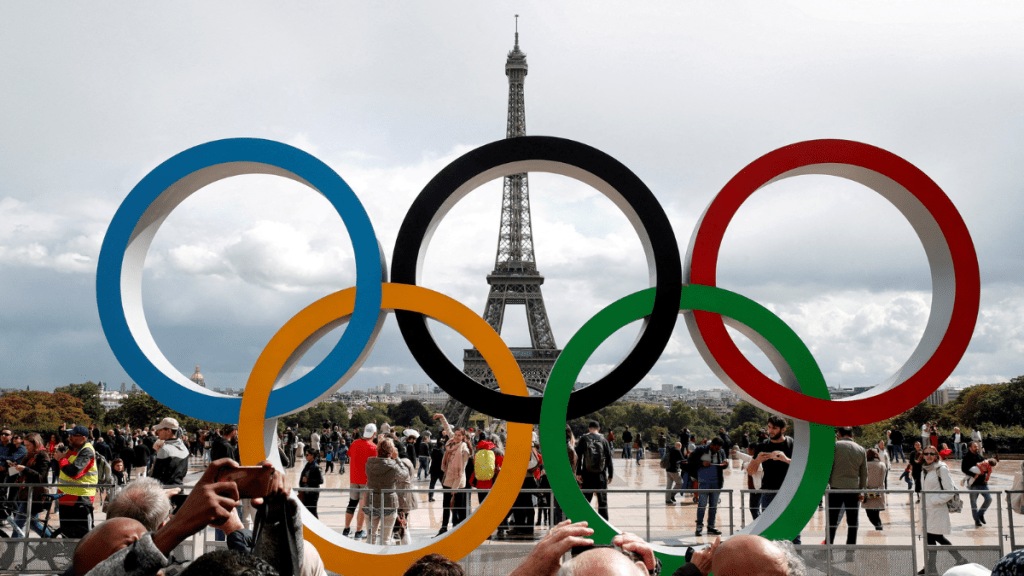By Atanu Biswas
Ernest Hemingway, whose 125th anniversary was commemorated on July 21, remarked that Paris is a “moveable feast”. Hemingway spent most of his time in the city of light for the majority of 1920-1924, when he wrote a series of lively articles for the Toronto Star by focusing his gaze on Paris.
The timing is of the essence. The second-ever Olympic Games of Paris were held in 1924. The Seine River has since seen a significant amount of water flow. In every sense. The Notre Dame Cathedral is undergoing a resuscitation to restore its original appearance, and the Eiffel Tower remains motionless. However, the changes have not just been the result of passing time; the city, the country, and the continent have all altered significantly.
French President Emmanuel Macron unexpectedly announced a snap parliamentary election just before the 2024 Olympics, following his party’s humiliation at the hands of the ultra-left and ultra-right parties in the recent European Union (EU) elections. Though it’s evident that they are more in control of French society than ever, the far right hasn’t been able to capitalise on their growing momentum for the time being. A strong anti-immigration and anti-EU sentiment is blowing in French society due to the inflow of African and Asian immigrants. The situation is so grave that the French soccer captain Kylian Mbappe issued the following warning during a UEFA Euro 2024 pre-match press conference: “I don’t want to represent a country that doesn’t correspond to my values or our values.”
Immigration was not really such a major problem in France a century ago. The left-wing Cartel des Gauches, an alliance of socialists and radicals, won the May 1924 legislative elections in France. In fact, after the victory of des Gauches in 1924, then President Alexandre Millerand, an “independent socialist” who was increasingly drawn to the right, resigned.
Macron, on the other hand, might be able to hang onto his position for the time being, but he will face constant challenges due to the growing support of the right wing in both the country and throughout Europe. Although the left-wing parties gained momentum, it may be due to the resistance to the ultra-rights. Thus, a century later, the nation’s sociopolitical landscape is entirely different.
Additionally, the Olympics have advanced significantly. A total of 3,089 athletes from 44 nations competed in 126 events across 17 sports in 1924. In contrast, 329 medal events in 32 sports will see close to 10,500 athletes from roughly 206 countries in 2024. From 6.25 lakh to an estimated 1.5 crore spectators, the number of attendees increased dramatically. In addition, about 50% of athletes in 2024 will be female, compared to only 135 in 1924.
Baron Pierre de Coubertin is regarded as the founder of the modern Olympic Games. He was a co-founder of the International Olympic Committee and served as its second president. The final Olympic Games under Coubertin took place in Paris in 1924. Numerous aspects were adopted during the 1924 Games, including the Olympic village and Olympic radio broadcasts.
New stars and fairytales are created at every Olympic Games. Indeed, Paris 1924 was a really exceptional year. Recall the magnificent 1981 film Chariots of Fire, which took home four Academy Awards. It’s based on the real-life experiences of Eric Liddell and Harold Abrahams, two British Olympians from 1924. The “Flying Finn,” Paavo Nurmi, a middle- and long-distance runner from Finland, was unquestionably the highlight of the 1924 Games. Because of their incredible skills, the Uruguayan football team also won over the hearts of football fans all over the world. And then there was Johnny Weismuller, one of the greatest swimmers of all time, who made his way to Hollywood’s silver screen, where he would play Tarzan in 12 films.
But American tennis player Richard Norris Williams, who shared the mixed doubles gold medal, wrote the real fairytale of the 1924 Games. Williams barely escaped having both legs amputated on April 15, 1912, when he leaped from a height of more than 12 metres into freezing water at -2°C amid the Titanic’s sinking. He made his way to the RMS Carpathia, which had come to rescue survivors, by swimming to a lifeboat. Twelve years later, he would take home an Olympic gold! And what is it if not a fairytale?
Numerous new athletes rose to prominence in a variety of sports; the Women’s Olympiad started in 1921, and the Workers’ Olympiad was set to start in 1925. On the other hand, viewers’ excitement for the amateur efforts of gentleman players during the 1920 Antwerp Games was lacking. Through athletic displays at the 1924 Games, the Olympic Movement was able to respond, and it was preserved for at least a century. And that’s the true contribution of the 1924 Games.
The Olympic Movement is facing a more serious dilemma now. The youth are becoming less interested in the Olympics, as seen by its declining TV ratings. The cost of organising the Games has risen too much. After hosting a game, many cities and nations — not only Montreal in 1976 or Athens in 2004 — faced severe financial crises. Large-scale infrastructure constructed for an Olympics tournament is frequently abandoned afterwards and becomes too costly to maintain. Thus, the most important question around the Paris 2024 Games is whether the Games can be revived in the city.
At the same time, Europe is experiencing a severe social crisis, which may also have Paris as its epicentre. Thus, along with the Games, a “titanic” socio-political conflict persists, of which the French legislative election was only one facet. Let’s wait to see whether Paris can write a fairytale within that as well.
The author is a professor of statistics at the Indian Statistical Institute in Kolkata.
Disclaimer: Views expressed are personal and do not reflect the official position or policy of FinancialExpress.com Reproducing this content without permission is prohibited.
